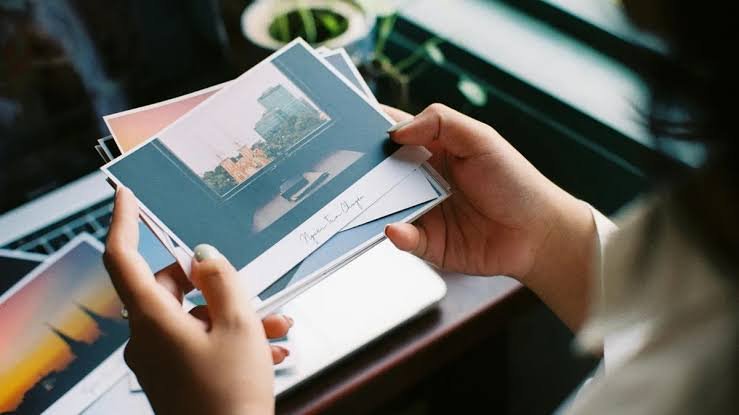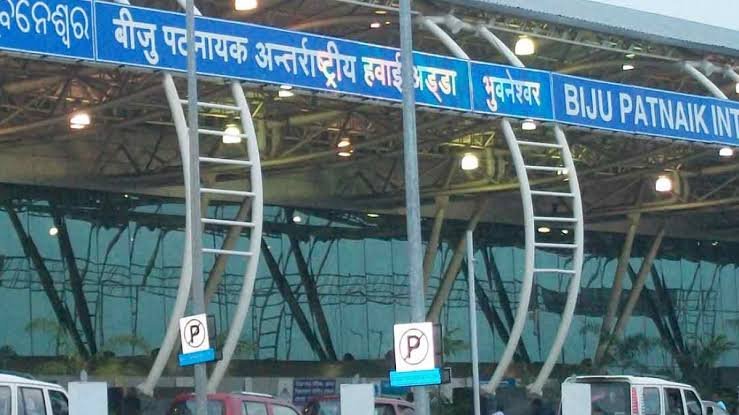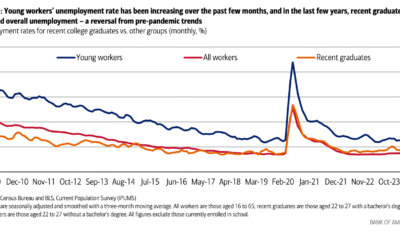Travel Guides & Articles
EaseMyTrip inks MoU with Timbuckdo to ease student travel

India’s vibrant student travel market just got a major upgrade. EaseMyTrip has signed a landmark MoU with Timbuckdo, a student-focused social commerce platform, to make travel more affordable, accessible, and aspirational for India’s Gen Z population. This strategic partnership aims to unlock exclusive discounts on flights, buses, hotels, and experiences tailored to students across the country.
The collaboration fuses EaseMyTrip’s extensive travel infrastructure with Timbuckdo’s strong student network to create a seamless booking experience. Students will benefit from never-before-seen deals via Timbuckdo’s discount marketplace powered by EaseMyTrip. These benefits are more than financial—they’re about enabling a generation eager to explore and experience the world now, not later.
With Gen Z and Gen Alpha influencing 93% of family travel decisions, the partnership is set to reshape India’s travel ecosystem. On-ground campus activations, student travel festivals, and influencer-led campaigns will drive engagement and spread awareness. Timbuckdo is targeting over one million student bookings within the next year.
This collaboration positions both brands at the heart of the USD 10 billion student travel market, empowering youth with value-driven, spontaneous, and experience-led journeys.
Travel Guides & Articles
Australia Marketplace India 2025 Captures India’s Growing Travel Potential

Tourism Australia hosted its 19th edition of Australia Marketplace India (AMI) at Fairmont Jaipur from August 3 to 6, 2025. This flagship trade engagement platform continues to strengthen Australia’s presence in one of its fastest-growing source markets. With record participation from eight Australian states and strong buyer interest from over 100 leading Indian travel operators, the platform reinforces Australia’s long-term commitment to the Indian market and its confidence in sustained double-digit growth.
Tourism Australia is witnessing strong momentum from India, as it firmly establishes itself as Australia’s fifth-largest market. Arrivals reached 453,000 in the year ending May 2025, a 10 per cent increase, while spending rose 14 per cent to AUD 2.7 billion. Tourism Australia’s leadership, Jennifer Doig, Regional General Manager for South and Southeast Asia, Nishant Kashikar, Country Manager – India and Gulf, Tourism Australia, and Jane Phillips, General Manager Distribution, Development and Partnerships, outlined the organisation’s strategic priorities and vision for the year ahead, reaffirming India’s critical role in Australia’s inbound tourism narrative.
Trade at its Best
With India emerging as a high-potential source of quality outbound travellers, AMI 2025 witnessed strong engagement from the Indian travel trade and record Australian representation across accommodation, tours, attractions, experiences, and state and regional tourism organisations, including several first-time participants.
The buzzing marketplace floor set the tone for purposeful business, where knowledge exchange and relationship-building unfolded in a seamless, well-timed format. The resplendent host hotel, with its discreet luxury, elevated the experience, balancing serious trade discussions with moments of relaxed networking over delightful culinary presentations. Evenings brought a lighter touch as clever icebreakers gave way to Bollywood-inspired camaraderie, as participants rehearsed and performed blockbuster dance numbers with interesting props and flawless thumkas. The following night saw delegates donning elegant Indian formal wear, cementing the bonds formed on the trade floor in the warmth of celebration.
Stronger Ties, Stronger Numbers
Adding to this momentum, Jennifer highlighted the collaborative spirit that AMI fosters. She shared, “Australia Marketplace India is a significant programme on the Tourism Australia calendar because it brings together the very best travel agents from across India and allows our Australian tourism stakeholders to showcase all the latest products and experiences for the Indian traveller. We are working closely with the stakeholders to ensure they truly understand the Indian market.”
Reflecting on India’s tourism growth to Australia, Nishant described it as a ‘positive upward trajectory,’ highlighting four key trends. He said, “We continue to be the fastest-growing inbound market for tourism in Australia, from being the seventh-largest market pre-COVID, to the fifth-largest and also one of the most promising markets for the future. The second highlight is that arrivals crossed the 450,000 milestone, a 10 per cent increase compared to the previous year. Thirdly, Indians are not just travelling, they are also spending more on Australian holidays. Spends by Indian tourists went up by almost 14 per cent to reach $2.7 billion, with a per capita holiday spend of over 7,000 Australian dollars. Indian travellers are also staying longer, and cumulative nights reached almost 29 million, a 21 per cent increase over the previous year, reflecting travel beyond the main cities into new states and regions across Australia. Lastly, the presence of all eight state and territory tourism organisations from Australia for the first time at AMI clearly shows the potential they see in India and their intent to capitalise on it.”
On her first visit to India, Jane shared her excitement about attending this power-packed edition in Jaipur. She noted, “It is clear that India is absolutely on the rise. Last year, we released a paper called The Future of Distribution on our Tourism Australia website, highlighting key trends. We are here to share better insights with the Indian trade, and the enthusiasm for selling Australia is fantastic.”
Catalysts of Growth
Visas are often the make-or-break factor, and Australia has cracked the code in making them effortless. There are no interviews, biometrics, personal visits, long queues, and everything is fully digitised. Applications can be submitted 24/7, and eligible travellers can receive up to a three-year multiple-entry visa for leisure or a five-year multiple-entry visa for MICE. Delivered in close collaboration with Australia’s Department of Home Affairs, this seamless system is reshaping access to the country.
Aviation remains key to growth, with 25 per cent of traffic on direct flights and 75 per cent via one-stop carriers like Singapore Airlines, Malaysia Airlines, Thai Airways, Cathay Pacific, and AirAsia. Capacity has risen with new direct services from Qantas and Air India, underscoring aviation’s strategic role in future success.
Seasonality is a key growth driver, with Indian travel to Australia peaking in May during summer holidays and again in December, aligning with Australia’s holiday season and major sporting events. Additionally, the growing Indian diaspora in Australia, now approaching one million, along with over 100,000 Indian students, reinforces the strong people-to-people links between the two countries.
Strategy at Play
This momentum has been sustained by targeted media outreach, impactful storytelling, and PR initiatives tailored to attract high-yield travellers. Nishant highlighted the success of its recent celebrity-led campaign, which achieved a cumulative reach of 70 million on social media and an earned media value of AUD 120 million as one of its most impactful promotions to date. Translating awareness into conversions, the organisation worked closely with land and airline partners to design practical campaigns, expand regional packages, and drive measurable results.
Tourism Australia’s Aussie Specialist Program continues to deliver strong results, with 3,200 trained specialists across India clocking a 90 per cent increase. The Aussie Specialist team delivered over 3,600 trainings in the past year, up 27 per cent, helping agents build confidence in selling Australia. The programme spans metros and Tier 2 cities and operates both in-person and online, ensuring a broad reach. Jane highlighted, “The Aussie Specialist Program lets agents across India learn online at their own pace. At AMI 2025, 90 per cent of participating agents were Aussie Specialists, with feedback confirming strong confidence in selling the destination.” Trade engagement continues to grow, exemplified by a record 45 Indian agencies attending the Australian Tourism Exchange in Brisbane last year. Tourism Australia also supports the Indian travel trade through key global events such as the Australian Tourism Exchange and G’day Australia
The Signature Experiences Collective offers 700+ commissionable products, 80 per cent located beyond major cities, helping disperse and sustain tourism across Australia. Innovative and highly popular PR campaigns such as ‘Howzat for a Holiday?’ featuring Pat Cummins, and another with cricketer David Warner, continue to grab eyeballs. The recently launched ‘Come and Say G’day’ campaign featuring Sara Tendulkar is slated to build a stronger pipeline of travel demand.
Blending Sustainability and Culture
Jennifer highlighted key focus areas for Tourism Australia, emphasising sustainability and Indigenous culture and said, “We are seeing more hotels catering to the environmentally conscious traveller. In Melbourne, a sustainable luxury hotel just opened with 7,000 live plants throughout the rooms, pillars made from old railway sleepers, timers in showers to conserve water, while encouraging guests to donate overpacked clothing to disadvantaged groups.” She further added, “Indigenous culture is really important in our story. On the Sydney Harbour Bridge, you can climb with an Indigenous storyteller, and on the Great Barrier Reef, the Dreamtime cruise with an Indigenous crew offers experiences like playing the didgeridoo, unique to Australia.” Jennifer noted that Indian agents attending AMI are actively engaging with these initiatives, whilst the Australian representatives are keen to learn and ensure their products cater to the Indian market.
Target Segment
India’s outbound potential is rising, with projections of 90 million travellers by 2040 and a surge in high-net-worth individuals. Tourism Australia targets high-yield travellers, with 90 per cent concentrated in eight key markets of Delhi, Mumbai, Hyderabad, Chennai, Bangalore, Kolkata, Andhra Pradesh, and Pune. Typically, aged 30 to 45, these travellers seek long-haul immersive experiences and are younger, digitally savvy, and experience-driven. Key trends include a shift from saving to spending, group travel for sports and concerts, and quick digital bookings
With new developments on the anvil, from expanded aviation capacity and vibrant new hotel precincts to sustainability-driven properties, Australia’s tourism landscape is evolving at a rapid pace. Anchored by indigenous culture as a powerful storytelling pillar, the destination is charting a distinctive narrative. For India, one of Australia’s fastest-growing markets, these shifts open exciting pathways for travellers to delve deeper, engage more meaningfully, and discover the very essence of Australia.
Voices From the Trade Floor
Garry Burns, Managing Director, Connect2India
AMI is such a vital trade show that connects the Australian tourism industry with the key travel agents in India and Tourism Australia does an incredible job putting it together. I have been coming to India for over 25 years and have seen the market grow from being quite small to now ranking among Australia’s top five source markets. It is forecast to climb even higher, which makes India absolutely vital.
When I first visited, Australia was relatively unknown here. Today, Indian agents are far more educated and their knowledge of Australia is impressive. Thanks to Tourism Australia’s efforts, we’re now seeing itineraries expand beyond the usual gateways to include Tasmania, South Australia, Western Australia, and even the Northern Territory.
Sarah Staruszkiewicz, Director, International and Partnerships, VisitCanberra
Coming to the Australia Marketplace India is really beneficial for us. It helps raise awareness of Canberra, Australia’s capital, and showcase everything the city has to offer. This event is invaluable because it gives us insights into traveller preferences, helps us build relationships, and allows us to showcase new products and experiences, as there is always something fresh to explore in Australia.
We are hearing how desirable Australia continues to be for Indian travellers, with strong interest in the upcoming peak travel season. There is also growing curiosity about building itineraries during our winter months. For us, that is a real advantage as Canberra is just 45 minutes away from snow play experiences, and truffle hunting in winter is proving especially popular with the Indian market.”
Anna Donovan, General Manager, Drive Car Hire & Overdrive
This is my second time at AMI, and it is a valuable platform for us because India is still a relatively new market for Tasmania. Being here allows us to educate people about our products, understand the distribution chain, and most importantly, build friendships within the industry. The evening networking is just as crucial as the meetings, as the real detail often comes in the follow-ups. We have noticed strong interest from Indian travellers in self-drive holidays, and Tasmania is perfect for short distances, diverse scenery, and a safe driving environment. Hiring a car in Tasmania is not just about getting around; it’s about enjoying the journey itself. Honestly, if you can drive in India, you can definitely drive in Australia.
Elle Reinehr, Client Relationship Manager, MCG Events
The best way to work with India is to be here, build relationships, and put faces to names, and AMI gives us that opportunity. For me, the Indian market is incredibly important. I know how much the Melbourne Cricket Ground means to Indian travellers as it is the mecca of cricket and an iconic part of any Melbourne itinerary. It is crucial that the product we are offering truly lives up to their expectations. My focus is on making sure the MCG experience is fantastic, memorable, and beneficial for both sides.
Emma Brown, Tourism Engagement Manager, Australia’s South West
For me, the most important opportunity in India is meeting new agents and buyers, and introducing them to Western Australia, an unexplored, undiscovered part of Australia offering truly unique experiences that go beyond the cities and into the heart of Australia. I know Indian travellers are looking for authentic Australian culture, wildlife, and nature, and Western Australia offers all of that in abundance. Many also come to connect with family and friends living there, so it is a destination that feels both fresh and familiar.
Travel Guides & Articles
Ranchi Airport eyes growth with new connectivity plans

Ranchi’s Birsa Munda Airport is set to witness more flight operations soon, with a new transit service to Bhubaneswar already launched. According to airport director R. R. Mourya, four additional routes are currently under consideration, highlighting the airport’s aim to strengthen air connectivity across the region.
Currently, only two airlines operate flights from Ranchi, but there are expectations of increased activity in the upcoming winter schedule. Although exact destinations are yet to be confirmed, Mourya revealed that Akasa Air had earlier shown interest in Ranchi operations, though the plan did not materialise.
The airport’s strong performance in passenger satisfaction has been another milestone. Rising from the 34th position last year to fifth place in the Airports Authority of India’s survey, the achievement reflects improved infrastructure and services. Mourya credited the efforts to enhance facilities, ensuring travelers have a more comfortable waiting experience.
Several infrastructural upgrades have been completed recently, including 300 square meters of new seating space and an additional lounge that was inaugurated last year. Food services have been expanded, and restroom renovations are already 70% finished. A dedicated parking zone for commercial vehicles has also been introduced.
Despite the optimism, Ranchi’s flight operations have temporarily decreased from 27 to 24. This drop is due to the reorientation and rescheduling of certain services. For instance, one route was shifted to Deoghar, while a Ranchi-Patna direct flight was restructured via Kolkata. However, Mourya assured that passenger convenience from Jharkhand remains unaffected.
Looking ahead, authorities plan to further upgrade passenger amenities within the next six to twelve months. With the addition of more airlines and continued infrastructure development, Ranchi’s Birsa Munda Airport is positioning itself as a rising hub in eastern India’s aviation network.
Travel Guides & Articles
The costliest chai in India: How credit cards sell you the lounge dream – Money Insights News

I open Twitter on travel days and see the same posts.
A tray of snacks, a cup of chai, soft chairs in the background, and a caption that says free lounge access with my card. Many people post it and celebrate it. I felt the same when I held multiple cards. Lounge entry felt like a small upgrade, so I told friends to get the same perk.
Then I started reading my statements line by line.
Annual fees after the first year. Spend targets to waive fees. Caps on visits that run out, too. Foreign currency markups on every swipe abroad. Reward values that shift without notice.
That is when I surrendered all my credit cards. I wrote about that decision here: I paid my bills on time and never paid interest. Here is why I quit credit cards anyway.
Since then I look at the lounge photo differently. The chai feels free in the moment, yet the bill often sits elsewhere. It sits in the annual fee. It sits in the spend you do only to keep a waiver. It sits in the forex markup that can exceed the value of the food on your plate. Miss one payment, and the interest can turn that visit into the costliest snack of the year.
This piece is a simple breakdown of that math. Before the next lounge selfie, it helps to ask one question. What did I truly pay for this plate and this chair.
The Annual Fee And The Spend Target
Let us start with the simplest cost. The fee.
When I held multiple cards, the first year felt easy. Free welcome, free visits, free chai. The second year was the turn. Renewal hit. I told myself the lounge perk made it worth it. Then I did the math.
A fee is not a line on a brochure. It is money out of your pocket. If a card costs a few thousand rupees and you visit a lounge three or four times in a year, you have already paid a high price per visit before you even sit down.
Many cards add a condition on top. Spend a large amount in the year and the fee will be waived. That sentence sounds harmless. In real life it changes behaviour.
Think about how people chase that target. I did it too. You bring forward purchases. You choose the card even when UPI or a debit card would have been cleaner. You add an extra order to a sale because the counter is close. You pay a bill early only to push the number up. None of these choices feel wrong in the moment. Together they create spend you would not have done at the same pace. The waiver feels like a win. The extra spend is the real payment.
Caps are the next surprise. Complimentary access is rarely open ended. There are quarterly limits or annual buckets. If your travel is lumpy, you can hit the cap in a single busy month. The next visit is billed. Add-on cards often draw from the same bucket, so a family of four can use up the allowance without noticing. The benefit that looked rich at sign-up becomes thin when you actually need it.
Here is a simple check you should use.
Ask yourself three questions.
- If the card had no lounge access, would I still pay this renewal fee.
- If the only reason I am swiping today is to hit a waiver, would I buy this item otherwise, at this time, at this price.
- If I expect two or three lounge visits in the year, would a direct paid entry on those days cost less than the fee.
Answering honestly is uncomfortable. It was for me. I realised I was paying for a feeling of access rather than a service I used often. That is why I surrendered my cards. If you fly every week, the math can favour a premium card. If you fly a few times a year, the fee and the target can turn a cup of lounge chai into an expensive habit.
In short, the bill for the lounge rarely shows up at the lounge. It hides in renewals, in targets that push spending, and in limits that reduce real use. Once you see that clearly, the next section becomes important. The foreign currency markup that attaches itself to every trip abroad.
The Foreign Currency Markup That Follows You Abroad
Think of a normal trip. You glide into the lounge, click a photo, sip chai, and board. The real bill starts after you land. Every coffee, taxi, museum ticket, and hotel swipe overseas carries a small extra line on your card. That line is the foreign currency markup.
Most Indian credit cards charge about 2 to 3.5 percent on every foreign transaction. Then GST gets added on that fee. The brochure writes it as a neat percentage. On a real trip it feels different.
I noticed this when I still had cards. One family trip. Roughly ₹1,20,000 spent abroad. My statement showed two extra lines I had ignored for years:
- International Markup Fee
- IGST on International Markup
At a 3.5 percent markup, that was ₹4,200. Add 18 percent GST on that fee, about ₹756 more. Total ₹4,956. No one at a counter asked me to pay it. It just appeared on the bill later. That single trip’s markup could have paid for a few lounge entries outright.
Where it adds up
- Every swipe overseas. Cafes, taxis, pharmacies, attractions.
- Online buys in foreign currency. Software, courses, subscriptions, hotel portals that bill in USD or EUR.
- Hotel deposits and car rentals. Pre-authorisations get added and released later. Rate changes in between can create small losses.
- Dynamic currency conversion. The terminal asks, “Pay in INR or pay in local currency.” Choose local currency. INR at the machine often bakes in a poor rate on top of the bank markup.
Run your own “trip test”
- Add up last trip’s foreign spends.
- Multiply by your card’s forex rate.
- Add 18 percent GST on that fee.
- Compare this number with what you actually ate and drank in lounges on that trip.
If the markup plus GST is bigger than your lounge consumption, then the lounge was not free. You paid for it through the markup.
Why this matters for lounge lovers
Many people keep a premium card mainly for international lounge access. The same card then collects 3 percent to 3.5 percent on almost every spend during the trip. If a family spends ₹1,50,000 abroad, a 3.5 percent markup plus GST is roughly ₹6,195. That is real money for a silent line item.
What about zero-forex cards
Some cards advertise zero forex markup. Read the conditions. Often there is a higher annual fee, a cap, or narrow categories. If you travel very often, a clean zero-forex product can work. If you take one or two trips a year, the fee can wipe out the benefit.
Small habits that save a lot
- Always choose to pay in the local currency on the terminal.
- Avoid cash withdrawals on credit cards overseas. Cash advance fees and interest start from day one.
- For online purchases, check the billing currency before you click pay.
- Keep one card for domestic use and one for foreign spends so you can track markups easily.
When I finally laid my statements side by side, the picture was clear. The lounge photo felt free. The markup paid the bill. This was one more reason I surrendered my cards. Next, let us talk about the slow leak that many people miss at home. Rewards that change value and give you less for the same fee.
Before You Renew: A Simple Audit That Works
One note before we wrap. I do not use credit cards now. I surrendered them. Still, I suggest this audit to anyone who cares about value. It is quick, honest, and helps you decide if lounge access is worth it for you.
The five-minute audit
- Count your lounge visits: Last twelve months only.
- Write the annual fee: For each card that promised lounge access.
- Per-visit cost: Fee divided by actual visits.
- Add the forex leak: On your last foreign trip, multiply total overseas spend by your card’s forex rate, then add 18 percent GST on that fee.
- Reality check: Is per-visit cost plus forex leak higher than what you actually ate or drank in lounges. If yes, the lounge is not free.
Small rules that save real money
- Do not chase fee waivers: If you are buying only to hit a target, count that extra spend as a cost.
- Track the cap: Quarterly or yearly limits apply. Add-on cards share the same pool.
- Kill markup at the counter: Always pay in local currency overseas. Avoid cash withdrawals on credit cards.
- Right tool for the job: Keep one simple card for daily use. Use a separate travel card only when you travel.
- Auto-pay in full: One late fee can wipe out a year of perks.
- Downgrade fast: If your fee per visit is high, ask for a waiver or move to a lower-fee product.
- Buy access when needed: If you expect two or three visits a year, paid entry on those days may cost less than a premium fee all year.
Disclaimer
Note: This article relies on data from fund reports, index history, and public disclosures. We have used our own assumptions for analysis and illustrations.
The purpose of this article is to share insights, data points, and thought-provoking perspectives on investing. It is not investment advice. If you wish to act on any investment idea, you are strongly advised to consult a qualified advisor. This article is strictly for educational purposes. The views expressed are personal and do not reflect those of my current or past employers.
Parth Parikh has over a decade of experience in finance and research. He currently heads growth and content strategy at Finsire, where he works on investor education initiatives and products like Loan Against Mutual Funds (LAMF) and financial data solutions for banks and fintechs.
-

 Business1 week ago
Business1 week agoThe Guardian view on Trump and the Fed: independence is no substitute for accountability | Editorial
-
Tools & Platforms4 weeks ago
Building Trust in Military AI Starts with Opening the Black Box – War on the Rocks
-

 Ethics & Policy1 month ago
Ethics & Policy1 month agoSDAIA Supports Saudi Arabia’s Leadership in Shaping Global AI Ethics, Policy, and Research – وكالة الأنباء السعودية
-

 Events & Conferences4 months ago
Events & Conferences4 months agoJourney to 1000 models: Scaling Instagram’s recommendation system
-

 Jobs & Careers2 months ago
Jobs & Careers2 months agoMumbai-based Perplexity Alternative Has 60k+ Users Without Funding
-

 Education2 months ago
Education2 months agoVEX Robotics launches AI-powered classroom robotics system
-

 Podcasts & Talks2 months ago
Podcasts & Talks2 months agoHappy 4th of July! 🎆 Made with Veo 3 in Gemini
-

 Education2 months ago
Education2 months agoMacron says UK and France have duty to tackle illegal migration ‘with humanity, solidarity and firmness’ – UK politics live | Politics
-

 Funding & Business2 months ago
Funding & Business2 months agoKayak and Expedia race to build AI travel agents that turn social posts into itineraries
-

 Podcasts & Talks2 months ago
Podcasts & Talks2 months agoOpenAI 🤝 @teamganassi





















